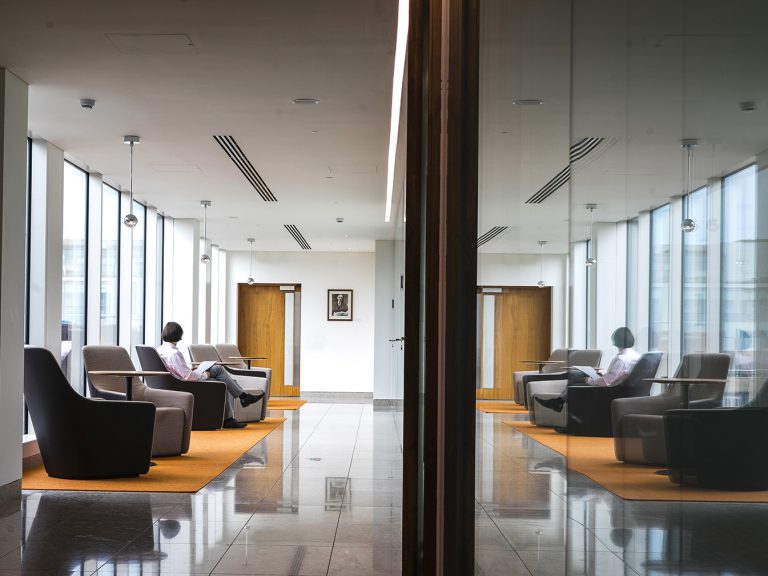
Offshore Renewable Energy Development in Ireland: Consultation begins on Future Framework
The Department of the Environment, Climate and Communications (“DECC”) is consulting until 19 February 2024 on the draft Offshore Renewable Energy Future Framework Policy Statement (the “Framework”), with the intent of finalising it by March 2024.
The Framework identifies 21 actions and some 13 questions for consultees. This is an opportunity for project developers to raise issues in relation to matters affecting the deliverability of generation capacity.
The current Phase 1 is developer led. Phase 2 is intended to transition to plan-led development to deliver the remainder of the 5GW 2030 target. The Framework identifies future targets of 20GW by 2040 and at least 37GW by 2050.
The Framework is intended to complement the National Industrial Strategy for Offshore Renewable Energy (“ORE”) and the Offshore Transmission Strategy.
South Coast DMAP
The South Coast Designated Maritime Area Plan (“DMAP”) will identify areas for development of fixed bottom offshore wind both by 2030 and post 2030.
The DMAP is expected to be submitted for Oireachtas scrutiny and approval by summer 2024. The Government previously indicated timing in the ORESS 2.1 Indicative Roadmap. The Framework confirms that Phase 2.1 will be confined to the South Coast DMAP.
Further DMAPs
Further DMAPs are to be announced by summer of 2024. Action no. 5 is to provide structures and supports to establish a future DMAP roadmap, including a timeline for deployment, to include DMAPs catered towards various technologies such as fixed, floating, wave and tidal (Q3 of 2024). The Framework states that this roadmap should be produced in accordance with all relevant legislative and regulatory processes and in alignment with technology maturity and offtake availability.
Competitive MAC process
Once a DMAP is established, the Maritime Area Regulatory Authority (“MARA”) will launch a process for obtaining a Maritime Area Consent (“MAC”).
This could be based on pass/fail criteria (as in Phase One); integrated with a competitive process (as with ORESS 2.1); or allocated following a stand-alone competitive process. MARA is keen to explore the potential to develop a competitive MAC process, and this is reflected at action 6.
It is worth noting also that Action 21 is to include a Community Benefit Fund regardless of route to market (Q3 2024 – Q1 2025). Community Benefit Funds have been a key feature of publicly subsidised RESS auctions and embedding them in MACs will extend them to non-ORESS projects and potentially entail a longer duration for payment to Funds.
Route to Market
A new State aid approval will be required after ORESS 2.2. The intent is that a new support scheme will be operating by 2026.
In this context it will be worth monitoring reforms to EU Internal Market in Electricity legislation, which seek to remove barriers to routes to market for renewable energy and recognise that not all energy system requirements can be delivered by energy price signals. The Framework already anticipates that design of a new scheme will consider integration with other market interventions such as capacity auctions and route to procurement of system services.
Important also to note is the indication that design of a new scheme will consider “accounting for the very high levels (80%+) of variable renewable electricity on the Irish system from the mid-2030s, including by considering variable support levels depending on time of generation or the level of curtailment on the Irish electricity system at a given interval”. Several actions are identified around route to market.
2GW for hydrogen production
In addition to the 5GW target for 2030, the Government has previously targeted an additional 2GW for hydrogen production.
This ties in with action no. 8 of the Framework, which is to design a competitive process to procure 2GW of ‘non-grid limited capacity’ in 2025, to be in development in 2030.
The Framework describes post-2030 ‘non-grid limited capacity’ as having a range of potential applications for green products and services (including green hydrogen and green data), which may be entirely off-grid, or with a partial connection only to the domestic grid.
Grid risk
In terms of transmission for domestic consumption, the Framework indicates that distance from generation site to connection point will be a key consideration to ensure best price of electricity for consumers.
It should also be borne in mind, however, that giving developers clarity and certainty on grid risk in terms of timing of connection, charging for use of system, and compensation for downward dispatch (for constraints or for non-ORESS projects) is vital to bring targeted volumes to fruition. Failure to manage this in an economically efficient way could have very significant cost impacts for consumers.
In addition to grid development, the Government anticipates a role for private wire development and HDVC bootstrapping connections. Action no. 11 is to roll out EirGrid’s Grid Implementation Plan and future iterations to aid alignment of infrastructure efficiency in a manner which considers offshore generation, grid and routes to market (Q2 2024 – Q2 2025). Action 12 is, within a regulatory review of CRU and EirGrid, to consider provision for seeking an expansion of capacity to provide for proactive, anticipatory investment in onshore and offshore grid (Q1 2024 – Q4 of 2024).
Planning Permission
The Framework states that, as part of the planning permission procedure, an Bord Pleanála will request and assess all appropriate environmental assessments.
Technologies
All technologies will play a role: fixed-bottom and floating turbines, as well as wave and tidal devices.
Four significant action items are identified under the category of ORE delivery, namely: conduct a study to assess the potential to deploy floating offshore wind, taking account of the first dedicated floating wind auctions to take place globally in 2024; investigate the feasibility of a floating offshore wind demonstrator site; maintain State support for existing or planned test sites and explore the feasibility of supporting additional test sites; and conduct an analysis to determine the economic and practical viability of various innovative ORE technologies.
Marine Data
The Framework states that Government is committed to leading and coordinating stakeholders across the public sector, to collaboratively share and produce data relevant to effective maritime spatial planning for ORE. It states that open sourcing of ocean data will help to inform the development of DMAPs and de-risk risk State auctions. It suggests DECC may procure data and related services and that it will work with Geological Survey Ireland and the Marine Institute to conduct surveys in areas where data is unavailable. Four actions items are identified in this area.
Ports
We can anticipate an update to the National Ports Strategy in 2025. Economic analysis has indicated that a minimum of four port facilities in Ireland is required to meet 2040 and 2050 targets not including the Belfast port, which already has capacity to service offshore projects.
Exports
Future interconnector policy, including the upcoming Offshore Transmission Strategy, will examine the potential for a more holistic model of interconnection in Ireland, including the potential for multi-purpose interconnectors and associated Offshore Bidding Zones. Action no 19 is to establish an Offshore Bidding Zone Frameworks (in Q4 2024).
As regards hydrogen, the Framework suggests that the most economically advantageous opportunity is to establish a pipeline to northwest Europe, likely developed from repurposed gas pipelines where possible, since shipping hydrogen is costly. Action no 20 is to assess renewable hydrogen and renewable hydrogen derivatives transport options (Q3 2024 – Q2 2025).



